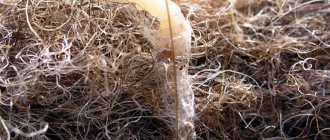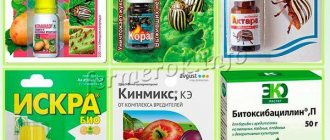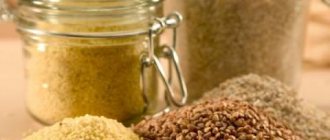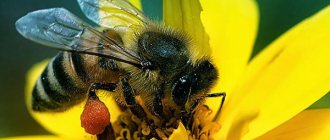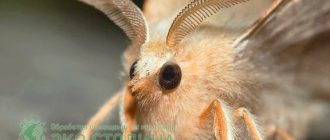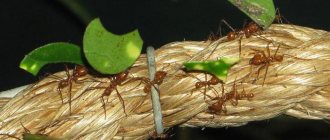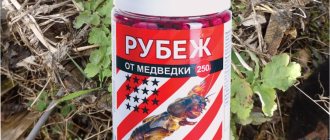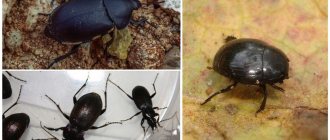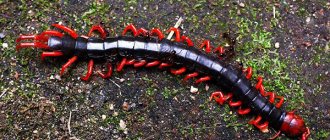Silent occupation
A bathroom is a specific room with a high level of humidity, located in the dark most of the day. Such conditions are ideal for small crawling and running animals, for which everyone often creates favorable conditions with their own hands.
Dragons will soon live here
If you Google it, you will be surprised to learn that crustaceans and even animals may also be scurrying around under your feet! Let's look at the most typical bathroom troublemakers:
- silverfish are primarily wingless insects from the bristletail order;
- woodlice - a class of higher crayfish of the order of isopods;
- nods - invertebrates from the order Centipedes;
- centipedes are arthropods considered to be the closest relatives of insects;
- mosquitoes are insects from the order Diptera;
- Tubifex - class zonalis, subclass oligochaetes.
Silverfish
Small white worms in the bathroom, at first glance, turn out to be elegant insects up close - sugar silverfish up to 2 cm long, with a characteristic teardrop-shaped body and three tail processes. Not being predators by nature, they can cause significant damage to wallpaper, linen, and books (think about it, fans of newspaper racks in the bathroom).
It also feeds on mold and fungi that grow only in a humid environment, so the appearance of sugar silverfish should alert you . The insect does not hibernate, but diligently reproduces, laying about 70 eggs in June-July.
The habit of hiding in the natural environment under stones, sticks, and in the leaves of a sugar bowl is also retained in the bathroom, cleverly being buried:
- in crevices;
- under peeling paint;
- under the bathtub, basins;
- in caked underwear.
Preferring darkness, silverfish rush in different directions as soon as a bright light comes on. However, on glazed tiles their speed decreases sharply, and if they get into a puddle or even a drop of water, they stop altogether.
Kivsyaki
Living in natural conditions, mostly underground, it appears by chance in the fallen leaves in the bathroom. Thanks to their smooth body, they look like worms in the bathroom, although specimens up to several centimeters in length make them look like snakes.
Demo version of kivsyak
The body of the centipede is covered with a chitinous layer, which does not prevent it from curling up smartly in case of danger. The “worms” move quite slowly, you can simply pick them up with your hand and take them outside, especially since they process plant residues well.
Woodlice and mosquitoes
These creatures, as a rule, appear by chance - woodlice, usually rise from the basement or ventilation ducts and quickly leave if the humidity is low. If these crustaceans stubbornly refuse to leave, most likely a pipe is leaking somewhere, creating favorable conditions for their residence.
Woodlice look like miniature armadillos - they curl up into a tight ball when touched; they are gray on top (juveniles are light-colored) and have a whitish belly. May cause harm:
- indoor plants;
- to humans, because they are carriers of fungal pathogens, depriving.
Mosquitoes fly into the bathroom, mainly if there is stagnant water in some container or there is no mosquito protection on the windows. They cannot reproduce here because the larvae must develop in stagnant water.
Remedies
If strange bugs appear in the toilet, it is necessary to urgently take measures to combat them. The longer they live in a room, the more difficult it is to eliminate them.
There are different ways to solve the problem of how to get rid of insects in the bathroom.
Ventilation check
If there is a lack of fresh air, it is important to inspect the ducts. The passage is thoroughly cleaned with a rag, and a disinfectant is sprayed into the hole.
You need to wash the grill well, free it from accumulations of grease and dirt. Treat a clean plate with bleach, bleach or chemicals.
If the natural flow of oxygen is not enough, it is recommended to install a powerful fan in the window. It is better to turn on the device after hygiene procedures and during periods when the room is not in use.
Chemicals
There are many different products available on the market to kill insects and their colonies. In order to quickly eliminate pests, it is necessary to carry out disinfection two to three times a week for a month.
You need to wash every corner and joints. To remove blockages, it is important to clean the siphon and free the communications from plaque as much as possible.
For this, there are many drugs containing strong chemicals:
After cleaning, close the windows and doors, take out the plants, and begin spraying pest control.
Other means that are also popular:
During use, you must wear gloves, as the compounds are poisonous. Substances are also produced in the form of pastes and gels, packaged in syringes. The mixture should be squeezed out pointwise in places where colonies accumulate.
Do not wash off or remove the poison for 24 hours. To prevent beetles from appearing in the house again, it is recommended to carry out preventive measures every three months.
Traps
Devices can be purchased in specialized stores. It should be noted that each type of device is intended for a separate group of insects.
There are devices for flying and crawling pests that contain substances that first attract and then kill them.
Electric type mechanisms are used in the bathroom. Such a trap lures beetles using a special smell or artificially created humidity, then kills the individuals with a strong discharge.
Another type of device is adhesive plates. Arthropods are attracted to light or a specially formulated chemical.
Once in the center, they stick, unable to free themselves. As a result, they die without food and water.
Manufacturers offer this type of trap as miniature boxes with valves. The insect crawls into a dark and damp space, but cannot get out of there.
The design is designed in such a way that the inlet hole is always open, and there is a protective membrane at the outlet.
Homemade devices
Many owners use traps made by themselves. Glass jars or plastic bottles are suitable for these purposes.
Tape or adhesive tape is attached to the outside, soil and damp rags are placed on the bottom. After the accumulation of individuals, the container is filled with water or sealed and thrown away.
Birch brooms are placed in the corners of the room and sprayed with liquid. Pests crawl into the web of twigs. All that remains is to throw away the broom along with them.
Toilet paper is well moistened with water and left for three days. Humidity must be maintained regularly. The beetles crawl into all layers of the roll and remain there.
Without unwrapping, the package is placed in a plastic bag, sprayed with disinfectant, and thrown away.
Folk remedies
Various powders and chemicals are also used to control pests. Here are the most famous recipes:
- Kieselguhr earth or diatomite is a loose rock made from the remains of algae. Has high absorption and abrasive properties. The insecticide is capable of destroying the lipid elements included in the chitinous layer, causing the death of beetles and worms. It should be scattered in corners and dark areas of the room.
- Orthoboric acid is a white, finely crystalline powder that acts as an antiseptic. Once in the body of parasites, it affects the nervous system and paralyzes. The mixture is added to the boiled yolk or diluted in water. The resulting solution or paste is used to treat pipes, crevices and cracks.
- Silverfish cannot tolerate the smell of cloves. Seeds are laid out around the perimeter, in communication nodes. The arthropod simply leaves the area.
Different types of white insects can live in the bathroom. The reason is high humidity, which contributes to the development of dampness. The creation of such conditions attracts pests.
Dirt, leaking pipes, puddles, wet rags are factors that ensure the reproduction and growth of colonies. To get rid of unpleasant tenants, you can use various methods: from folk remedies to traps.
But the main rule is still maintaining cleanliness and proper ventilation of the room.
Where does the attack come from?
There are basically two objective reasons for the appearance of “tenants”:
- various types of communications - woodlice, millipedes, etc. migrate with impunity through ventilation shafts;
- interruptions in the operation of filtration systems, for example, in the tap water there may be small black worms in the bathroom - mosquito larvae.
We create the remaining prerequisites ourselves in pursuit of glamorous design or due to banal laziness, they can be:
- warm water pipes hidden in boxes under the casing; but small-timers will always find a micro-crack to squeeze through to visit you;
- condensation flowing into nooks and crannies under the bathtub that are difficult to reach;
Pandemonium in a wet corner
- damp rugs on the floor near the bathroom/toilet;
- dust;
- clogged drains;
- storage area for rags under the bathroom.
Worms in the mattress (pillow, bed)
If you find a damaged mattress or pillow, examine the bedding for the presence of small light-colored worms - clothes moth larvae. Calling them worms is not very correct, because the caterpillar has, albeit tiny, six pairs of limbs. The clothes moth (larva), just like a furniture moth, makes a cover, constructing it from fabric and a certain substance of its own, reminiscent of silk.
Clothes moth larva – photo
With normal nutrition and optimal temperature, the larva develops in two months, and with a drop in temperature in five months. Caterpillars have a length from 1 to 12 mm; interestingly, they cannot drink, so they prefer damp areas of fabric - greasy stains, food debris, sweat. House moth larvae can be found in closets with clothes, in carpets, and other dark places.
Measures to “clean up” the territory
Constantly scrubbing a bathroom down to the last square millimeter is difficult, but it is possible to apply basic preventive measures . Instructions for keeping dry are as follows:
- reduce humidity - eliminate leaking taps, ensure good ventilation;
- cover the ventilation holes with fine mesh;
- seal cracks in walls, floors, and ceilings;
- use floor mats made of special materials - rubber, silicone, fiber polymers, bamboo;
- do not create deposits of dirty laundry;
- wipe surfaces weekly with chlorine-containing preparations;
- After general cleaning, thoroughly dry the room using a fan or household dehumidifier.
Desiccant with tablets
By using replaceable absorbent tablets/granules, you will save electricity. One tablet weighing 450 g is enough for a year.
Chemicals
After eliminating the causes of dampness, insecticides will become powerful means of exterminating pests in the bathroom.:
A guaranteed result is provided by professional disinfestation of the premises performed by special services, no matter what its price.
Several types of processing are used:
- cold fog;
- barrier protection;
- hot fog;
- complex.
Why do they appear?
Insects breed at temperatures not lower than twenty degrees, so regular ventilation of the bathroom during the cold season will get rid of not only adult insects, but also future offspring in the clutches. However, the most effective method of control remains the use of a variety of chemicals, which today can be freely purchased at retail outlets. Their use will give hope that insects will never appear in the house again, disrupting the usual way of human life.
Summarizing
Having once experienced the shock of meeting an incomprehensible bug-worm in the bathroom, which should not be there in principle, the attitude towards cleaning this room changes radically. For some reason, small animals/insects inspire superstitious fear, probably because of their ability to suddenly disappear and hide in unexpected places. After the “reclamation” of the bathroom, the only person who can wander in there is an innocent spider – a symbol of wisdom and creativity.
More information about some of the inhabitants of the bathroom can be found in the video in this article.
In the comments to the article you have the opportunity to express your opinion or share information on the topic.
In addition to the well-known spiders and cockroaches, insects of very interesting shapes and colors can often settle inside houses and apartments. Each species has its own living conditions. For example, small agile tadpoles and other strange silvery, white individuals appear in bathrooms and toilets. Their presence is always associated with certain microclimatic conditions inside a particular room. Bathrooms attract many varieties precisely because of the constant humidity and dampness, which are favorable for living and reproduction.
Prevention
After completing the course of treatment, in order to avoid relapse, it is necessary to observe the following preventive measures:
- basic hygiene rules, frequent hand washing;
- when keeping animals in the house, their preventive anthelmintic treatment is mandatory;
- thorough heat treatment of meat products (may contain worm eggs) and complete avoidance of eating raw fish (herring, sushi);
- Thorough washing of vegetables and fruits (there may be worm eggs on their peels).
( 2 ratings, average 4.00 out of 5)
If you find silver insects crawling in your bathroom, but don’t know what to do or how to get rid of them, below we will tell you about insects in the bathroom and toilet.
Before answering the question of what kind of very small transparent insects are crawling in the bathroom, shown in the photo below, it is worth figuring out where the white insects in the bathroom and toilet could have come from and what they are called. After all, you probably keep the bathroom clean and promptly remove rust and mold.
Insects can appear in the bathroom and toilet for several reasons:
- increased air humidity;
- wet floor in the room after taking a shower;
- failure to treat the toilet with disinfectants;
- accommodation on the ground floor;
- poor condition of sewer pipes.
In fact, insects living in the bathroom and toilet are quite unpretentious; they can appear simply from high humidity. Below we provide photos of strange insects that may appear in the bathroom.
Recognizing their appearance is quite simple: you will see them almost immediately. Below you can see photos of insects in the bathroom with names. Almost all the inhabitants of bathrooms come out of their nests only when it is dark, so as soon as you turn on the light, you will immediately see small, small insects scattering in the bathroom.
Insects in the bathroom: photos and names
One of the reasons for the presence of uninvited guests in bathrooms and toilets is a violation of the proper microclimate, which creates attractive conditions for pests, as well as basic hygiene standards indoors. In such cases, pests actively begin to penetrate from ventilation, cracks, and through balconies.
Most often, centipedes, spiders, silverfish, wood lice, and butterflies (in the photo you can see them enlarged) appear inside the bathroom or toilet, which are easy to get rid of.
White insects in the bathroom
As for the white insects in the bathing room, these could be recently shed silverfish. They are small in size (up to 10 mm), the body is slightly elongated, and has a light gray or almost transparent color. The body ends with three hairs. They run very fast.
Woodlice also acquire a white shell color during molting; during other periods of life they are gray. They are a type of crustacean. They are harmless and do not bite. Occasionally they are able to appear and spoil vegetable and fruit stocks inside pantries.
There are insects in the bathroom and toilet, tadpoles are running fast
If quickly crawling white tadpoles appear, these are common silverfish. It belongs to the small wingless species of the bristletail order. This is one of the most ancient creatures; scientists have proven that this species existed more than three hundred million years ago.
The tadpole got its name due to the presence of small silvery scales. People sometimes confuse silverfish with the centipede flycatcher, but the main difference between the second insect is the large number of long legs.
Silverfish in an apartment do not pose any threat to people and do not have a negative impact on health, but from an aesthetic point of view it is still better to get rid of them.
Causes of black worms
All helminths that parasitize the human body are white. There are several reasons why they can change their color.
To get rid of the parasites, you just need to drink on an empty stomach.
Any parasites can be driven out at home. Just remember to drink once a day.
These can be coloring pigments found in food. If a person has eaten beets, pomegranates, or red grapes, the helminth that comes out during defecation may be colored red or brown. The worm can change its color to a darker, almost black, if there is an excess of iron in the host’s body.
In fact, black worms often seem to be completely different phenomena to people. Thin sticks, which are the remains of fibers from previously consumed food, can be mistaken for worms. This is observed in both children and adults after eating fruits and vegetables (persimmon, banana).
Persimmon or banana fibers may resemble worms after digestion
Meconium, the feces of newborns containing digested epithelial cells, mucus and hair, can be considered as a black worm in an infant. It has dark inclusions of various shapes, which are mistakenly mistaken for black helminths.
A frequent reason for discussing “black worms” are messages on forums that people find black worms in the toilet and fear that they may be helminths. Most types of worms rarely leave the human body voluntarily. Most often, they emerge dead, after targeted therapy . Black worms of varying lengths that appear in the toilet can only indicate a clogged drain.
White insects in the bathroom: how to get rid of them?
To combat white insects inside the bathroom and toilet, you must first decide what specific type of parasite is bothering you. And even then, in order to get rid of it, special means are selected.
Before treating the apartment, it is important to restore order inside the room, wash all plumbing equipment, furniture, floors, and walls. It is also necessary to create balanced microclimatic conditions and, if necessary, install additional ventilation and a battery. Eliminate cracks and gaps between ventilation grilles.
Folk remedies
Traps
Preventative measures did not help scare away insects from your home, but they still made their way in? Let's look at how to remove silverfish using traditional methods.
Common and accessible traps are:
- Wrap the outside of a liter jar with adhesive tape and put a few pieces of bread inside. The insect will easily get into the jar, but will not be able to get out along the slippery walls. Set the trap overnight in the place where silverfish are spotted.
- Twist (crumple) a newspaper or other paper, moisten it with water (lightly so as not to get wet) and leave it overnight. Insects will immediately settle there, as they love moisture and darkness. In the morning, take the paper outside, away from the house and burn it.
- Traps that can be purchased in stores are effective. These are Velcro, which are thin cardboard with an adhesive surface. They do not give a second chance to stuck insects. Trapper Insect Trap and Trapper Max Glue Traps are laid out in places where silverfish accumulate and the “fillability” is periodically checked.
Homemade herbs and compounds
A clean, dry bath is an unpleasant environment for silverfish.
Spices
In addition to traps, other methods of combating silverfish are used. Insects cannot tolerate strong odors, such as bay leaves, cinnamon or pepper. They do not live in rooms with such odors.
Soap based balls
Once a silverfish has taken up residence in the toilet, it will quickly leave it; wash the toilet with this product. For 1 cup of baking soda – 2 tablespoons of grated laundry soap (72%), ¾ cup of hydrogen peroxide and 10 drops of lavender or citrus oil. Make small balls from this mixture and wash the toilet, spreading it over the inner surface twice a week. Thanks to this aromatic product, the toilet will have a pleasant smell, and insects will run away.
Oils
Lavender and citrus oils can be used in other ways. Add a few drops to water and wash or spray the resulting solution in areas where silverfish accumulate. As the aromas of the oil fade, repeat the procedure.
In addition to oily mixtures of lavender and citrus fruits, they are used in their natural form. After grating the zest of a lemon or orange, scatter it in places where the insect is likely to live. Lavender branches will also repel the pest.
Freezing
Not only the adult individual is afraid of low temperatures; the silverfish larva also dies in the cold. Therefore, if in winter it is possible to “freeze” the room, do this procedure.
